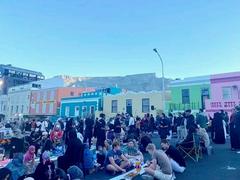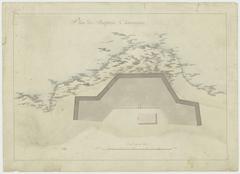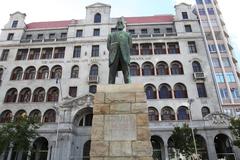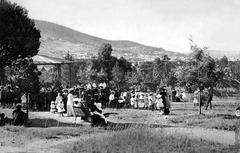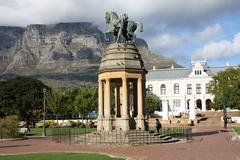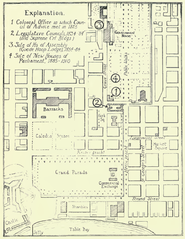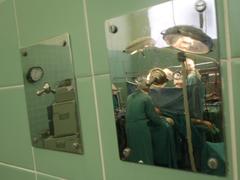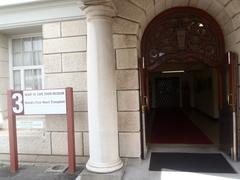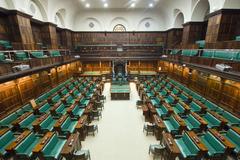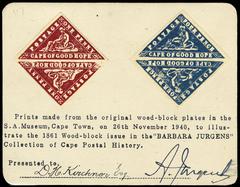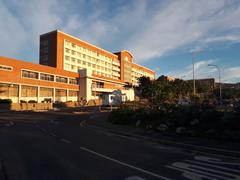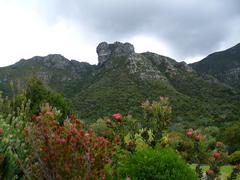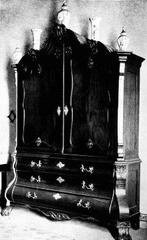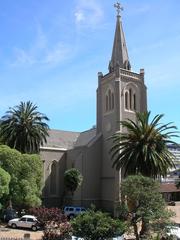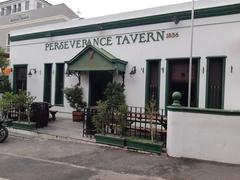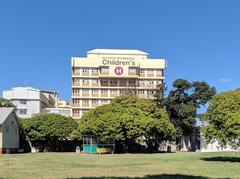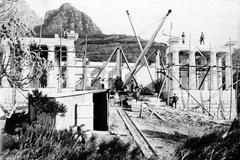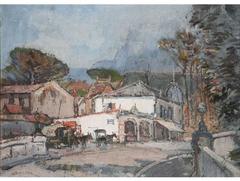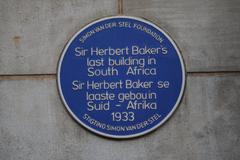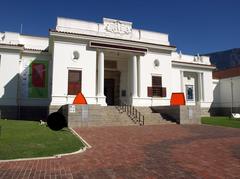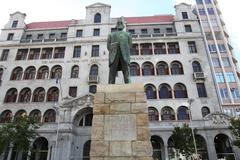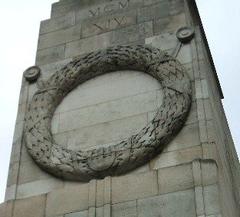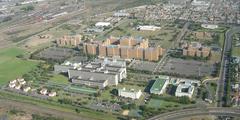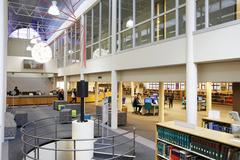South African Sendinggestig Museum: Visiting Hours, Tickets, and Cape Town Historical Sites Guide
Date: 14/06/2025
Introduction
The South African Sendinggestig Museum, located at 40 Long Street in Cape Town, stands as an enduring symbol of the city’s colonial past, religious heritage, and the resilience of its marginalized communities. As the oldest surviving mission church in South Africa, the Sendinggestig is an essential stop for anyone interested in Cape Town’s multifaceted history. Its legacy is deeply intertwined with the narratives of slavery, emancipation, cultural exchange, and social transformation that have shaped the city and the nation.
The museum’s Cape Dutch architecture, rare basilica plan, and historically significant exhibitions—such as the pioneering Tevolution Museum—offer a unique, immersive experience. Visitors can explore carefully preserved artifacts, original church records, and innovative displays, as well as participate in guided tours, educational programs, and community-oriented events. Its central location on Long Street also places it within easy reach of other notable heritage sites, making it a cornerstone of any cultural itinerary in Cape Town.
For up-to-date visitor information and resources, browse the official museum website and consult local heritage guides (Cape Town Heritage Trust, South Africa.net, Western Cape Government).
Historical Background
Origins and Establishment
Founded between 1801 and 1804 by the South African Society for the Advancement of Christ’s Kingdom, the Sendinggestig Museum occupies a building constructed specifically for missionary work. Its doors opened to people of colour, enslaved individuals, and free blacks—making it the first church of its kind in South Africa (Cape Town Heritage Trust). The church rapidly became a hub for worship, education, and community support, especially for those marginalized by the colonial system.
Architectural Significance
The Sendinggestig is a rare example of Cape Dutch ecclesiastical architecture featuring a basilica plan. Constructed with Table Mountain sandstone and indigenous timber, its design was both functional and symbolic, accommodating religious services, classrooms, and living quarters for missionaries. The whitewashed walls, gabled façade, and restrained interior reflect a commitment to dignity and permanence (FeverUp).
Role in Abolition and Social Transformation
During the early 19th century, the Sendinggestig played a central role in the spiritual and educational lives of enslaved and free people. After the British abolition of slavery in 1834, the church continued to support emancipated individuals and their descendants as they adapted to new social realities. The Sendinggestig’s congregation, notably diverse in origin, contributed to the emergence and evolution of the Cape Malay community (South Africa.net).
Preservation and Museum Conversion
By the mid-20th century, the original congregation had dwindled due to forced removals and urban change. Recognizing the importance of the site, heritage advocates and the Dutch Reformed Church restored the building, which became a National Monument in 1979. Since then, the Sendinggestig Museum has preserved the building’s historical integrity while interpreting the broader legacy of slavery, missionary work, and social change (Cape Town Heritage Trust).
Architectural Features and Layout
Basilica Plan and Materials
The church’s rectangular basilica plan, with a central nave and side aisles, was adapted to local materials—Table Mountain sandstone and indigenous timbers. The high ceilings, ample windows, and original thatched (later corrugated iron) roof create a bright, ventilated interior. The wooden gallery, historically used by enslaved congregants, and the Chippendale pulpit are significant historical features (LekkeSlaap).
Façade and Decorative Elements
Reflecting the Protestant ethos, the exterior is simple and dignified. Inside, the whitewashed walls and minimal ornamentation focus attention on the building’s historical purpose as a place of worship, education, and community gathering.
Visiting the Sendinggestig Museum: Practical Information
Opening Hours
- Tuesday to Saturday: 9:00 AM – 4:00 PM
- Closed: Sundays, Mondays, and public holidays
Tickets and Admission
- Entry: Free (as of 2025; please confirm on the official website for updates)
- Guided Tours: Available upon request; advance booking recommended
- Accessibility: The museum is wheelchair accessible and staff can provide assistance
Location and Directions
- Address: 40 Long Street, Cape Town City Centre, Cape Town, South Africa
- Public Transport: Easily accessible by bus or taxi
- Parking: Available in adjacent public parking facilities
Photography
Photography is permitted in designated areas. Please check with staff for any restrictions to protect delicate artifacts.
Exhibitions and Special Programming
Permanent Exhibitions
Explore the original nave, gallery, pulpit, and historic church records. Exhibits focus on Cape Town’s slave history, the development of the Cape Malay community, and the role of the Sendinggestig in religious and social transformation.
The Tevolution Museum
Launched in 2024 as South Africa’s first Tevolution Museum, this interactive exhibition—created in partnership with the Western Cape Department of Cultural Affairs and Sport and Hisense South Africa—documents the evolution of television in the country (Western Cape Government). Highlights include:
- Chronological displays of vintage and contemporary televisions
- Interactive, functional exhibits (including gaming consoles)
- The 110-inch Hisense UX display, showcasing South African manufacturing innovation
- Educational workshops on broadcasting, television repair, and digital media
- Thematic explorations of television’s role in South African society
Art and Cultural Programming
The museum regularly hosts temporary art exhibitions, musical performances, and cultural events—including annual carols by candlelight and storytelling sessions with descendants of the original congregation (Capetowner).
Educational Initiatives
School tours, community workshops, and special lectures deepen engagement with the museum’s themes of social justice, technological change, and cultural identity.
Nearby Cape Town Historical Sites
Enhance your visit by exploring other significant sites within walking distance or a short drive:
- Iziko Slave Lodge
- District Six Museum
- Bo-Kaap Museum
- Castle of Good Hope
- Company’s Garden
- Greenmarket Square
- Robben Island (accessible by ferry)
These sites collectively offer a comprehensive perspective on Cape Town’s diverse heritage (Cape Town Travel).
Frequently Asked Questions (FAQ)
Q: What are the museum’s opening hours?
A: Tuesday to Saturday, 9:00 AM – 4:00 PM. Closed Sundays, Mondays, and public holidays.
Q: Is entry free?
A: Yes, admission is currently free.
Q: Are guided tours available?
A: Yes, request in advance for the best experience.
Q: Is the museum accessible for people with disabilities?
A: Yes, with ramps and accessible facilities; staff can assist as needed.
Q: Can I take photos inside?
A: Photography is allowed in designated areas.
Q: What other historical sites are nearby?
A: Iziko Slave Lodge, Bo-Kaap Museum, District Six Museum, and Robben Island.
Conclusion and Visitor Recommendations
The South African Sendinggestig Museum is a pivotal site for understanding Cape Town’s—and South Africa’s—complex journey from colonial rule and slavery to community resilience and social justice. Its rich exhibitions, preserved architecture, and engaging educational initiatives make it an essential destination for history enthusiasts, students, and cultural travelers alike.
Be sure to plan ahead by checking the museum’s website for up-to-date information on hours, events, and exhibitions. Consider combining your visit with a guided tour of nearby heritage sites to fully immerse yourself in Cape Town’s storied past.
For more details, visit the official museum website and follow them on social media for the latest updates on events and programs.
For additional resources and to plan your visit, see the following official links:
- Cape Town Heritage Trust
- South Africa.net
- Western Cape Government
- FeverUp
- LekkeSlaap
- Capetowner
- Artefacts
- Cape Town Travel
- Wikipedia
Plan your visit, download the Audiala app for guided tours, and follow us on social media for more about Cape Town’s historical and cultural treasures.

